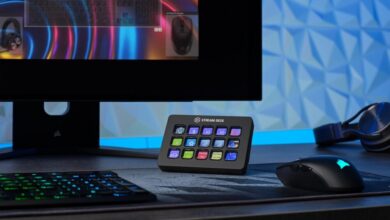
Wi-Fi 6 is the latest version of the wireless standard and it started rolling out a couple of years ago. The Wi-Fi 6E variant arrived a year later after approval by the FCC and replication by the rest of the regulators and was a great improvement, since maintaining its advantages increased the available spectrum up to 6 GHz. Now an update arrives as version 2 which promises to further improve the standard.
Wi-Fi Alliance has presented Wi-Fi 6 Release 2 at CES 2022. An adequate framework considering that the vast majority of equipment presented had support for the standard. The update builds on the foundations established by the original Wi-Fi 6 release by adding new features that developers can choose to take advantage of. The new functions are compatible with all Wi-Fi bands, 2, 4, 5 and the 6 GHz band which includes Wi-Fi 6E.
The update claims to address the traffic load, which has increased steadily over the past few years in home and business Internet use. «We’re seeing a significant change in uplink versus downlink traffic. ” Wi-Fi Alliance technicians explain. “A few years ago, you were seeing ratios in the 10: 1 range, which means you were downloading 10 bits of data for every bit you were uploading or sending over your broadband connection. A major vendor has already indicated that the ratio has changed to around 6: 1 and they hope that ultimately let’s get to a 2: 1 ratio«.
Wi-Fi 6 Release 2 aims to meet that growing demand for loading on the MU-MIMO uplink, which essentially allows network devices to load data at the same time on different streams within your network. It is a natural extension of the MU-MIMO downlink that is already part of Wi-Fi 6 and should help the new generation of Wi-Fi devices adapt to the increased network traffic caused by the pandemic, especially when people continue to work, study and consume online content.
The standard update adds features like transmit target wake-up time, extended sleep time, and multi-user dynamic spatial multiplexing power savings, all of which are designed to help keep Wi-Fi devices up and running. with batteries conserve power while connecting to an access point. These are very technical concepts that developers will be able to use, but hopefully it will help me.improve battery life on smart home sensors, cameras, or other such wireless devices that have grown tremendously in recent years.
And Wi-Fi 6 enhancements
Of course, the improvements over Wi-Fi 5 are overwhelming, such as the Quadruple throughput up to 10Gb / s, greater reliability, lower energy consumption and others such as:
- Greater global bandwidth per user for content transmission in ultra high definition and virtual reality.
- Greater capacity of routers to handle connected devices.
- Support for more simultaneous data streams and at higher speed.
- The spectrum is divided into more channels to allow more communication paths. (80 or 160 MHz versus a maximum of 40 MHz in the 5 GHz band).
- Packets contain more data and networks can handle different data streams at the same time.
- Improved performance (up to 4x) in the maximum range of an access point.
- Better performance / robustness in outdoor and multipath (cluttered) environments
- Ability to offload wireless traffic from cellular networks where reception is poor.
- 256-QAM modulation versus 64-QAM of the above.
- Multi-user MIMO (MU-MIMO) that allows four downlink connections.
- Better energy efficiency, which should translate into increased battery life for devices.
- More total spectrum: 2.4 GHz, 5 GHz and 6 GHz bands. In the future, the 1 GHz band could be joined.




